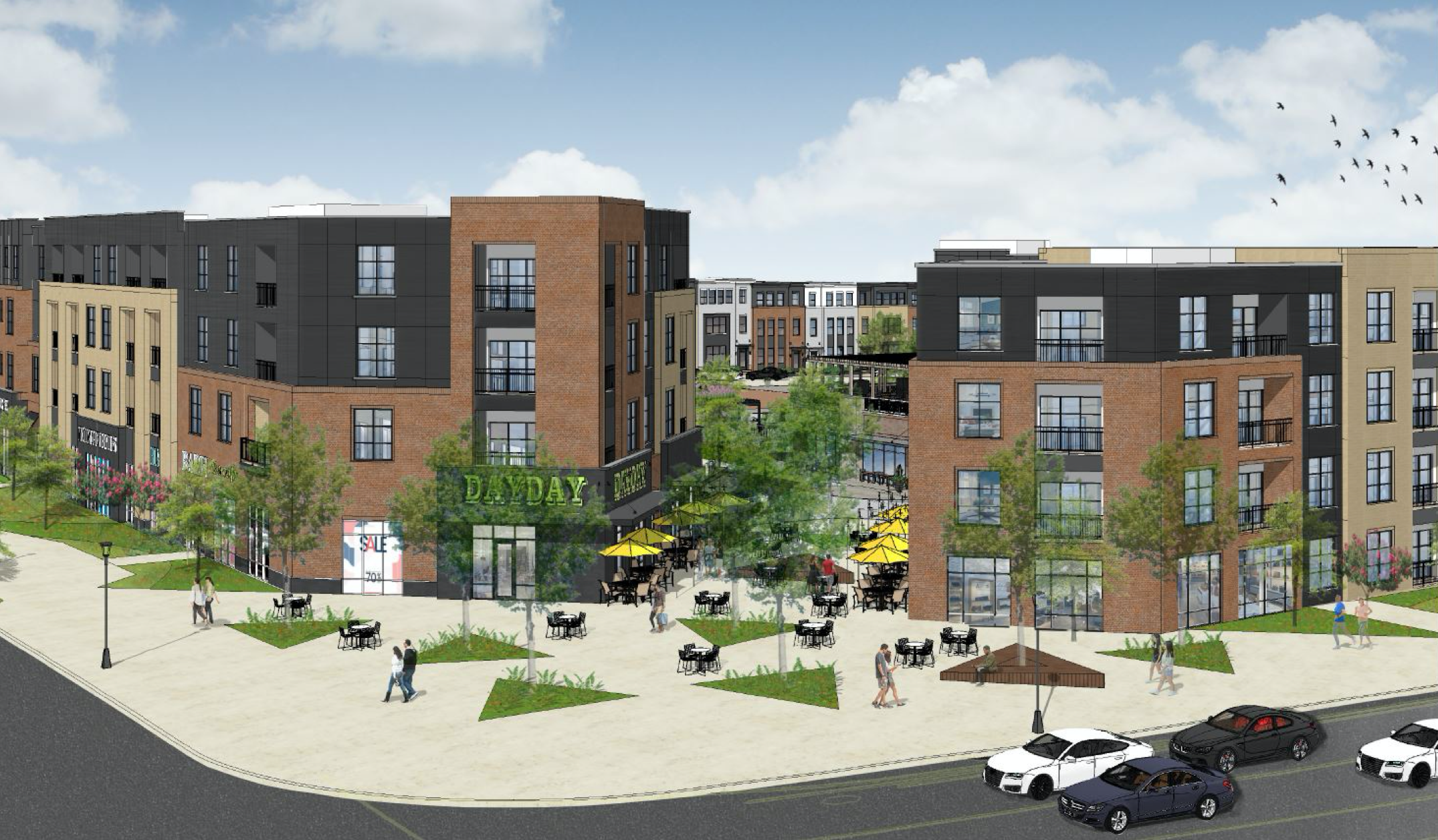CHAPEL HILL – Members of the Chapel Hill Town Planning Board said Tuesday that they were pleased with the plan drafted by the Central West Steering Committee, but wanted more clarification on several issues. Members of the Steering Committee itself, though, weren’t so happy with the plan.
The Committee’s plan was a draft version of uses and heights for proposed mixed-use development in the area which is near the intersection of Estes Dr. and Martin Luther King Jr., Blvd. The plan also included recommendations for bicycle and pedestrian amenities.
The draft, presented partially in map form, was received fairly well by the Planning Board. Jason Baker said he was “pretty pleased” with the plan, and said he believed the bicycle and pedestrian improvements would be “fantastic” for the community and would help to mitigate traffic.
John Ager said he believed that changes along Estes Dr. were inevitable.
“I take issue with some of the points that have been made by members of the public because I think they are obsessing about the immediate problem and are not looking at the big picture,” Ager said. “There’s a lot of argument about will Estes be widened or not. It will be widened in my opinion.”
The work of the Central West Steering Committee has not been easy since it was undertaken in December of 2012, and at times, the meetings have been contentious. Ager said the committee lacked a “strategic vision” which was what made the task of the Obey Creek Steering Committee go more smoothly.
Planning Board Member Del Snow said she was not pleased with the work done by the consultant, who was brought in to provide the committee with technical expertise.
“As I said before, I feel that the tempo and style of this small area plan was set by the consultant when they came in with the maps first,” Snow said. “I’ve always been a big proponent of having the data to back up what you have proposed. That, in itself, troubles me.”
Neal Bench, Chair of the Planning Board, contended that something was going to happen to Estes regardless of what the committee presents to the Council. He said he would rather it happened sooner than later.
Four members of the Central West Steering Committee, who have formed their own unofficial subgroup, said they can’t endorse the “official” plan.
During the public input session, the four members presented their own map, which they said better addressed how development will affect traffic. They also criticized the official plan for failing to include community feedback.
Committee Co-Chair Michael Parker rebuffed that claim. He said that the Committee held four community events, hosted walking tours, and offered a public survey.
“I think we tried as hard as we could to reach out and be reached out to,” Parker said.
Parker and fellow Co-Chair Amy Ryan led the effort to formulate the map that was presented to the board. After several other versions were on the table, the map was drawn-up based on one-on-one meetings that Ryan and Parker held with their fellow members. Ryan said the goal was to find trends among suggestions put forth by committee members and incorporate them into a new plan.
“One thing that I like about it is that it squarely addressed the traffic concerns which are important for people in the area, and it also leaves things open to developers to have flexibility about how they do things,” Ryan said.
The plan wasn’t well received by some neighbors in the area at a previous meeting who believed the new plan had even less detail than previous versions and featured “no definition on impact to the community.”
Chapel Hill Resident Heidi Chapman was one of six people, included the four unhappy members of the committee, who spoke to the Planning Board during the public comment period. The other was Maria Palmer, who praised the plan and the work of the committee.
“This is an attempt to present something to the Planning Board today. It does not represent the public’s view,” Chapman said. “The public made it very clear at the Amity Church [event] and also in the survey that they did not like any of the plans that the consultant had come up with and the plan that the two chairs had come up with is even more intense.”
Steering committee member Mickey Jo Sorrell began the presentation of the dissatisfied subgroup.
”I want to make it clear that this group of four is not against urban development when it is appropriate in the right places,” Sorrell said.
The group presented their revised map, which includes what they call more in-depth traffic analysis. Julie McClintock said it better explained how the development could impact the neighborhood.
“If the biggest issue of developing this area, the biggest constraint is traffic, why would you not want to deal with it?” McClintock said.
The group also presented a report summarizing what they believed to be the shortcomings of the official plan.
“The traffic and number of trips analysis, I think you will really see is really presented way beyond what the majority of the committee has put forth,” Tuttle said. “I think it is very important for the Planning Board not to let this process move on to Town Council with out having that same kind of analysis presented.”
Firoz Mistry echoed Tuttle’s assertion.
“Anyone who travels on it [Estes Dr.] today knows that every evening, the traffic backs up all the way to the Library, so it is really a disaster already,” Mistry said.
McClintock added that she felt the committee had failed to also address storm water issues in an area that is prone to flooding.
Topics to be discussed at the committee’s meeting on October 3 include traffic performance measures, storm water issues, and street character vision.
The Steering Committee will return to the planning board on October 15 with final draft of the Central West Small Area Plan.
The committee will continue its work until November 25, when it reveals a final plan to the Chapel Hill Town Council.






Comments on Chapelboro are moderated according to our Community Guidelines